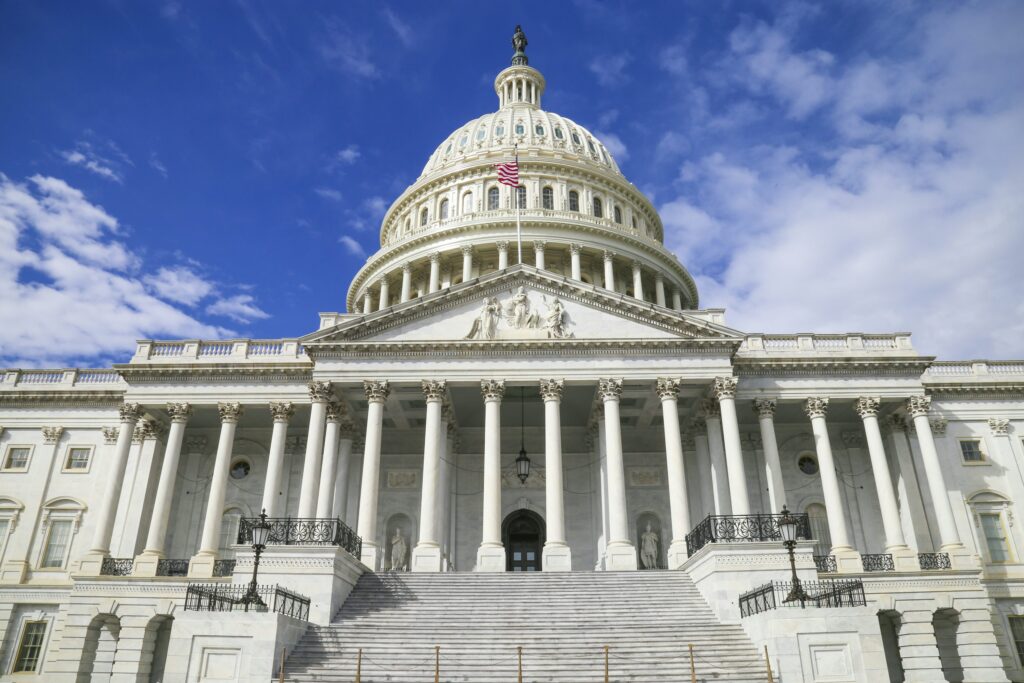Kyle Cave
Staff Writer
On October 1, 2025, at 12:01 EST, the government failed to pass a spending bill that would keep the government open for the next seven weeks. This sent the government into a shutdown.
A government shutdown occurs when the U.S. Congress is unsuccessful in passing a temporary funding measure or a continuing resolution to keep the government funded.
Congress operates budgets throughout a fiscal year; this period typically ends in September. This forces all nonessential operations in the government to cease. This is the first government shutdown the United States has faced since 2019.
The reason for this current shutdown is over healthcare spending. Specifically, spending for the Affordable Care Act. Since 2021, the ACA has had a premium tax credit authorized for millions of low-income Americans.
This was authorized under the “American Rescue Plan Act”. This tax credit, according to CBS News, has helped over 22 million Americans.
The Republican proposal for a spending bill is a bill that keeps the government open for 7 weeks. However, it doesn’t extend the premium tax credit guaranteed for the ACA. This potentially leaves this tax credit in limbo and low-income Americans vulnerable to healthcare cost spikes.

The Republicans have also claimed that the Democratic spending bill proposed gives noncitizens access to the ACA. This is a false claim. Under the Affordable Care Act, non-citizens are not eligible to receive insurance.
This applies to Medicaid as well. There is also no evidence that the Democratic spending bill gives non-citizens access to this insurance.
At this moment, neither side is negotiating a bill to reopen the government. The only way the government reopens at this moment is if Democrats vote for the GOP spending bill that leaves the ACA tax credit out.
A government shutdown has many effects, not just on the federal government, but also on many federally funded operations across the country.
When it comes to a possible impact on students at ESU, the impact as of right now will not be heavy. The Department of Education will still be able to process FAFSA forms. However, the Department of Education faced massive layoffs at the start of the year. And those layoffs could go further with furloughs.
One action that occurs during a shutdown is that non-essential federal employees are “furloughed.” This means that they are put on temporary leave until the shutdown ends.
Essential workers during a government shutdown are still required to show up to work. However, they will not be receiving pay until the government reopens. This opens up the potential for workers calling in sick due to no payments.
Essential workers in the Federal Government are workers such as airport security officers, air traffic controllers, and military troops, such as the National Guard. Federal contractors are not required to work under a shutdown and are not eligible for pay when the government reopens.
A government shutdown can have effects on air travel as well. With air traffic controllers and TSA agents not being paid, many may not show up to work. This could cause flight delays and much longer wait times.
According to Axios, a government shutdown requires newly-hired air traffic controllers to halt their training and field instructions. This can also raise safety concerns.
During a government shutdown, politicians and lawmakers will still be paid. Lawmakers are paid their usual $174,000 salaries that they have been receiving.
The CBO (Congressional Budget Office) has stated that as many as 750,000 employees could be furloughed each day as the shutdown continues.
The current Trump Administration says that the government will begin to lay off government workers as well. This makes the future of many federal government workers being furloughed grim and uncertain.
A government shutdown not only affects federal workers, but it also affects economic data. The Bureau of Labor Statistics is set to release job reports on the first Friday of every month at 8:30 AM EST. A shutdown prevents that data from being released.
The significance of this is that the Federal Reserve is set to meet again on October 28-29 to determine an interest rate cut. If a government shutdown lasts long, this could skew their decision due to the limited data available to them.
This government shutdown we are in could last for weeks or months. There is no clear end in sight, at least for now. This moment is a big “wait and see” moment for the country that could potentially have impacts on upcoming elections, including the 2026 midterm election.

